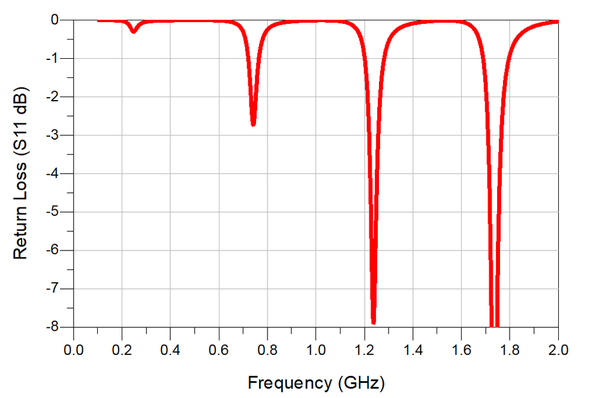Hi there,
Microwave/RF engineers like myself characterize an antenna in many different ways: pattern, gain, EIRP/TRP, conductive loss and return loss. Of all of these, by far the simplest one to measure is return loss (often called S11 when using S-parameters).
Return loss describes when you send a signal into the antenna port how much is reflected back into the transmitter vs how much is actually radiated. For example if you have a return loss of 0dB it means all the power is reflected and none is radiated. -3dB return loss means half the power is returned and half is radiated, -6dB means a quarter is returned and 75% is radiated and so on.
% Power Out = 100 X (1-10^([S11]/10))
The **formal definition** for an "tuned-radiator" is a return loss of -3dB, meaning the antenna is radiating half of the signal power it is provided.
I had a chance to look at the black stick of wire in the TIU today with a vector network analyzer (VNA) that measures S11 (return loss) by soldering it to an SMA connector and hooking up.
I did the measurement both with the antenna up in the air (like when we drill the cover and have it stick out)and lying flat a few mm over a conductive sheet (like it comes inside the TIU when you buy it).
Antenna over a flat conductive surface (about -0.1dB return loss at 920 MHz... meaning only 2.5% of the signal is flowing in and out of the antenna):
Antenna up in the air (about -0.15dB return loss at 920 MHz... meaning only 3.5% of the signal is flowing in and out of the antenna):
Neither of these above measurements meet the criteria of a tuned-radiator (-3dB S11) meaning we wouldn't consider them an effective antenna from a microwave standpoint.
For comparison here's the return loss on this external antenna I bought (better than -8dB S11 at 920 MHz) meaning more than 85% of the signal is flowing in/out of the antenna.
Good to know.










